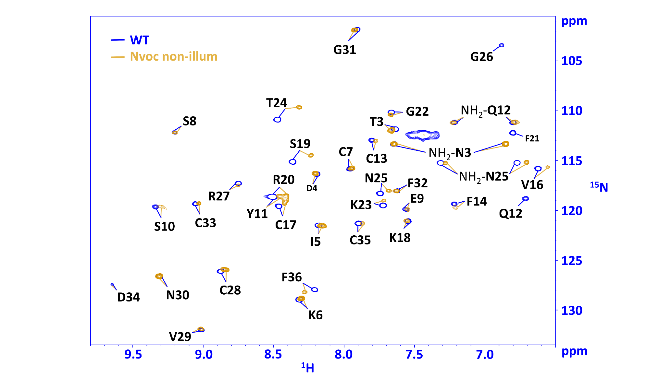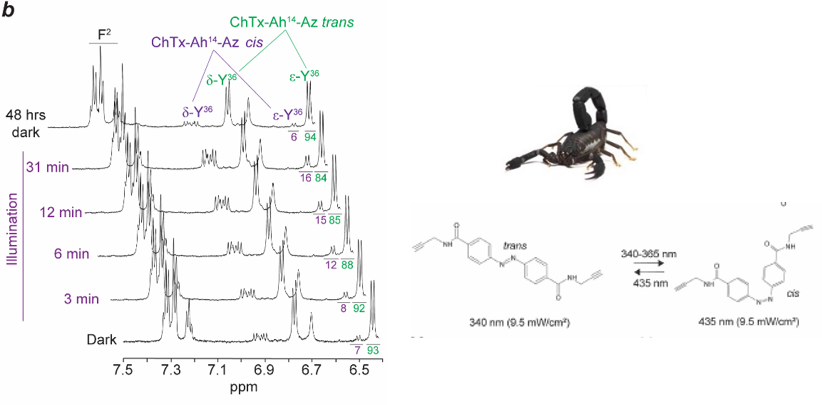OTHER DISULFIDE-RICH PEPTIDES (TOXINS)
Toxins rich in disulfide bridges have strong structural identities with the antimicrobial peptides described above. We study toxins of various origins (plants, ants, spiders, scorpions).
We work on the fine understanding of structures (structural diversity, structure-activity relationships, evolution of structures during the evolution of species) to improve understanding of mechanisms of action and participate in the design of the new insecticide compounds. Finally, we are involved in several projects on photo-activatable toxins, which open new therapeutic avenues.
Plant insecticidal toxins

Biopesticides are effective alternatives to chemical insecticides. We study the peptide AG41 from the roots of alfalfa, which has exceptional insecticidal activity against several pests such as aphids and weevils. The 3D structure we determined allowed to establish structure-function relationships that explain this high insecticide activity. The key residues for the entomotoxicity of the peptide AG41 are F13, R25, L27 and L31 (https://doi.org/10.3390/biom13030446 ).
Insecticidal toxins from ant venoms


Photo-activatable scorpion or spider toxins
The aim of these projects is to target channels with very precise spatiotemporal control, opening up new opportunities for light-guided therapeutic interventions.

Our first role was to validate the grafting of the Nvoc cluster (UV-cleavable) onto the Huwentoxin-IV (HwTx-IV) toxin from the Cyriopagopus schmidti spider and its total cleavage (after UV), without any structural impact on the toxin. Left: example of superimposition of NMR spectra of a spider toxin targeting neuronal ion channels, free or linked to the photo-activatable Nvoc group. Right: 3D structure indicating the area disturbed by the presence of the Nvoc group (https://doi.org/10.1038/s41467-022-27974-w ).

Following this proof of concept, we developed the application for the BeKm-1 toxin from the Buthus eupeus scorpion, which acts on the ERG channel (https://doi.org/10.1161/CIRCRESAHA.123.322880).

Finally, we used NMR to monitor the reversible isomerization of the azobenzene group grafted onto Charybdotoxin ChTx, a toxin from the scorpion Leiurus quinquestriatus hebraeus that acts on the Kv1.2 channel. Successful integration depends on the precise positioning of the azobenzene and chemical grafting guided by SAR knowledge. These advance highlights the adaptability of photoswitch technology to complex peptide structures, offering new possibilities for pharmacological modulation (https://doi.org/10.1002/anie.202423278).